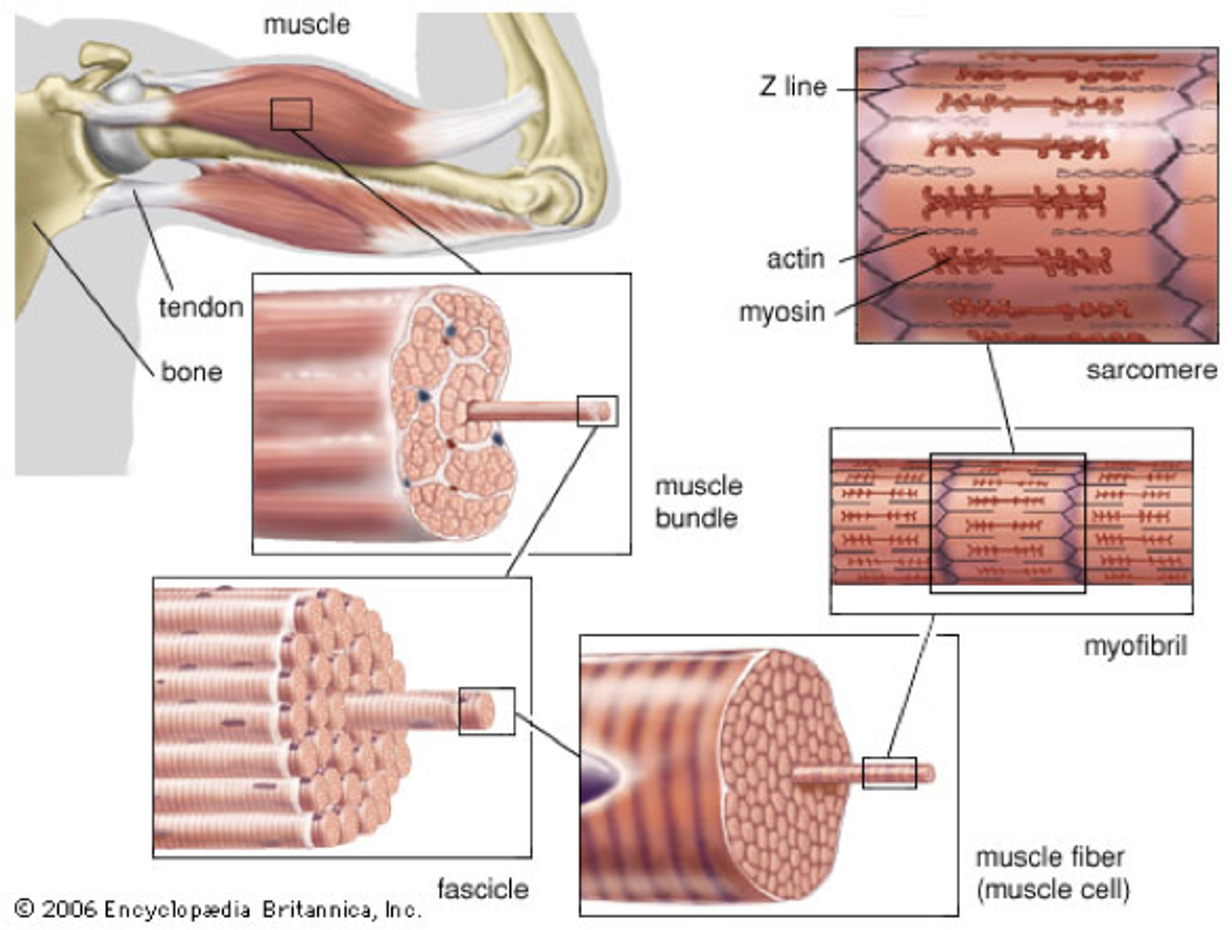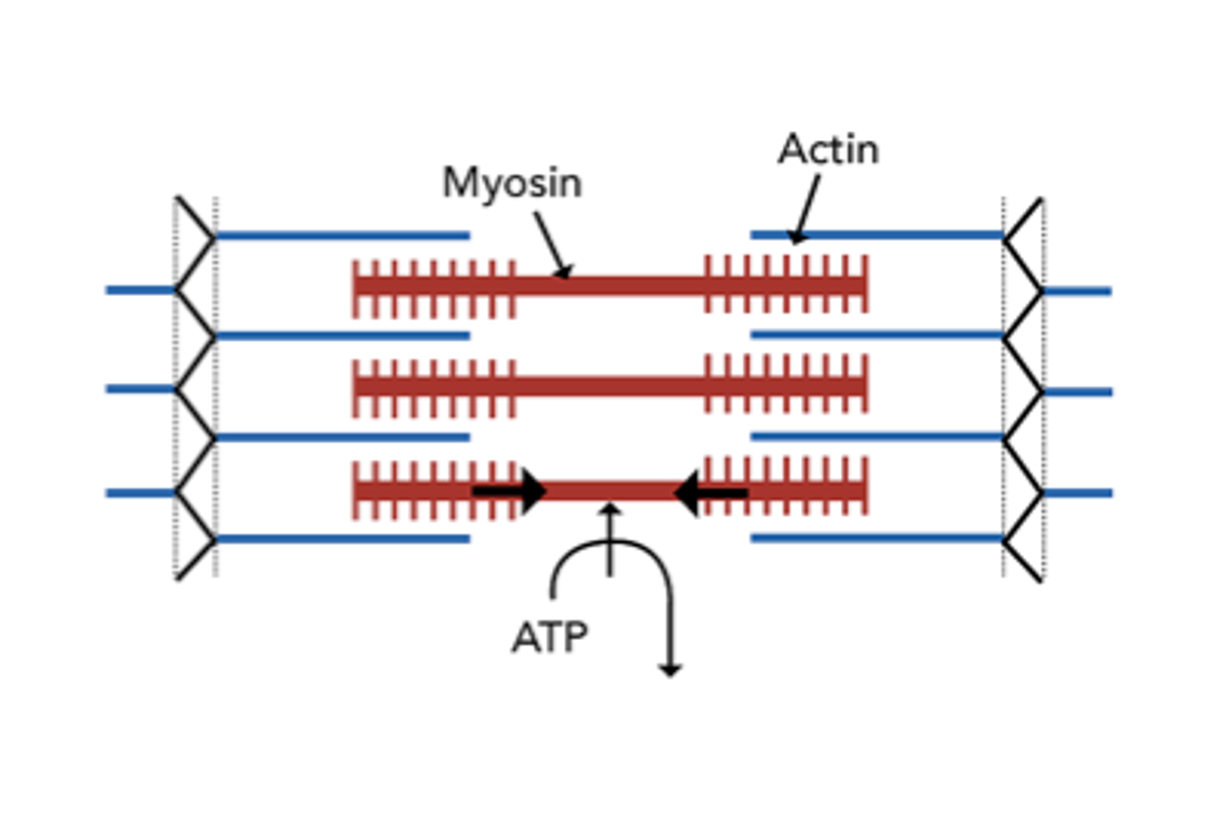A few weeks ago, you have learned which types of muscle there is. For you as free athletes, so called striated or skeletal muscle is most relevant. In order to get an understanding of how this muscle works, it is important to get to know some basics about its inner structure.
A deep look inside
You can think of a muscle as a strong cable made of wires – the so called muscle bundles. These muscle bundles consist of muscle fibers that run parallel and are also known as muscle cells.
Those cells in turn contain many chains of myofibrils. Along the length of the myofibril, there are sections called sarcomeres which describe the system of actin and myosin filaments. These are long proteins that slide into each other to produce tension and relaxation of the muscle, i.e. movement. In a concentric contraction for example, the myofibrils shorten because the myosin filament pulls up the actin filament.

The sarcomeres constitute the majority of our muscle mass. The rest consists mainly of blood vessels, connective tissue, cytoplasm and nerves.
How does movement arise?
Myofibrils are controlled by the nervous system which innervates muscle fibers to contract or relax. The brain sends signals to the muscle cells with the help of mineral ions, also called electrolytes. This chemical energy gets transformed into kinetic energy within the cells: the muscle contracts. Tendons that connect a muscle with a bone transfer the produced muscle force which leads to skeletal movement.
By the medium of calcium ions, the heads of the myosin filament get activated to bind to the sites on the actin filament and the muscle contracts. As soon as the concentration of calcium within the muscle cell drops, the heads “tilt” back to their original position and let go of the actin filament – the muscle relaxes.

In order to lower the concentration of calcium, magnesium is needed. However, it does not become active directly within the cell but prevents the further loading and facilitates the unloading of calcium.
Muscles also have weak spots!
Although the system is very sophisticated, it is not perfect and does have some flaws: In case of miscommunication, meaning that nerves send too many, too strong or just wrong signals or muscle cells cannot handle received action potentials appropriately, spasms can occur. These are uncontrolled contractions of the affected muscle.
One well-known sort of spasm is the muscle cramp.
Muscle force originates from processes in a microscopic scope but can have huge impacts though. Tens of thousands of muscle and nerve cells interact perfectly to orchestrate even the tiniest movements. True to the motto “the strength of chain is its weakest link”, a muscle can only work efficiently if all of its cells work properly. The good news is: muscles are capable of learning! And the best way to strengthen the system and teach your muscles is constant training in the form of intense movement!
By the way
Myofibrils are the reason that striated muscle is called like that. The fibrils are arranged circularly and regularly whereby darker and lighter elements – actin and myosin – alternate. This lets the muscle cells appear striated under the microscope.
If you want to know more about this topic, click here and here.